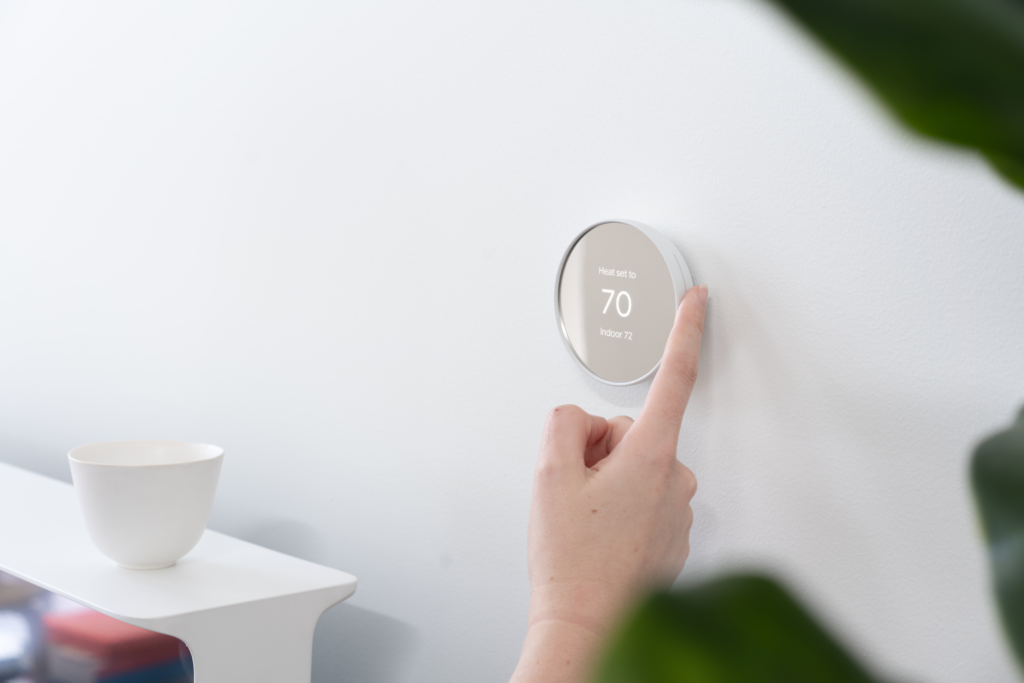When the Nest smart thermostat was first introduced, the company made a number of bold assertions about its capabilities. The manufacturer stated that by utilising a more sophisticated heating system, its thermostat could cut your overall energy consumption by as much as 10%, which would result in cost savings for the customer.
Now that experts have used the thermostat for an entire year, they have gathered enough information to determine whether or not the claims made about it are accurate. Continue reading to find out more, but what one can tell you right now is that it is one of the most advanced smart thermostats that money can buy.
The heating business was the smart home company’s primary focus for many years until it expanded into the production of security cameras such as the Nest Cam IQ and the Nest Cam Outdoor.
The google nest learning thermostat was the company’s first product, before it got into security cameras like the Nest Cam IQ and the Nest Cam Outdoor, and it continues to be a very competitive and smartly designed thermostat, even though some of its functionality lags behind the competition in 2017. The Nest Thermostat was the company’s first product, and it was before it got into security cameras like the Nest Cam IQ and the Nest Cam Outdoor.
The Nest thermostat is so advanced that even if it is technically possible to operate it with your smartphone, you won’t find yourself using that feature for very long. Not only does it remember the many temperature settings that you place it to during the day, but it also uses the motion sensor that is built into it and the GPS functionality that is incorporated into its app to adjust its programme based on your schedule.
To put it another way, if you make the decision to leave the house for the evening rather than stay inside, the thermostat is savvy enough to prevent you from wasting energy by heating an empty house.
Although it is not a perfect system—the absence of zonal controls means that you will frequently find yourself heating empty rooms—our family was able to reduce our heating expenditure by just over 13.5 percent in the first year that we used it. However, there are a few exceptions to this rule, and you can find more information on the ‘Performance’ part of this website.
Features
The Nest Learning Thermostat is composed of a front panel and a back panel. There is the thermostat itself, which can either be mounted on the wall (for example, in place of the thermostat that is currently there) or placed on an optional stand, which can be purchased separately. If you choose the second option, you will need to position the Nest such that it is close to a power outlet and within arm’s reach of your router (you will need Wi-Fi).
The heat link constitutes the other component. The boiler will be controlled by this component, which will also enable wireless communication between the thermostat and the boiler.
Due to the fact that it needs to connect to some quite high-voltage connections, we decided to have the Nest Thermostat professionally installed as the manufacturer recommended this course of action. In total, the installation took about an hour, and it was a relatively straightforward process for the installer to disconnect our previous thermostat and install a Nest in its place. The Nest is now our primary method of controlling the temperature in our home.
Although it is possible for a single household to have many zones, each of which can be equipped with its own Nest thermostat and heat link, the vast majority of homes will generally only have a single thermostat. At this time, Nest does not provide any associated radiator valves that would enable you to precisely adjust the temperature in each individual room.
The click wheel on an Apple iPod serves as a design inspiration for the thermostat’s interface. It shouldn’t come as a surprise given that the inventor of the iPod was also the man behind the creation of Nest, which was over a decade ago. Because it is crafted from high-quality materials (glass and brushed metal, for example) and features an elegant design, it unquestionably outshine the appearance of a typical thermostat.
To traverse the circular menu and enter data, the ring itself employs a paradigm that is analogous to that of the iPod and consists of a rotation and a press/click action.
The thermostat has a really attractive and functional design, in our opinion. The use of a wheel to select a temperature is not only simple but also gratifying. Although this control scheme can be difficult to use when doing more involved tasks like entering a Wi-Fi password, day-to-day operations rarely reach this level of complexity.
The current temperature is represented on the outer ring of the display, while the temperature at which you want to be is presented in bold text in the middle of the display. The temperature, humidity, light, and activity sensors are all contained within the sensor window.


